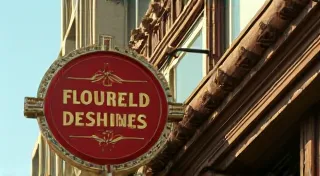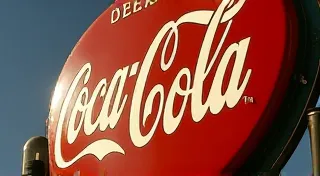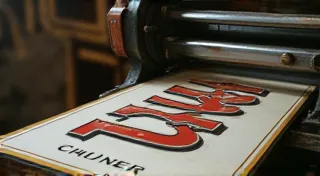Cleaning & Restoring Vintage Advertising Signs: A Delicate Process
Vintage advertising signs are captivating pieces of Americana, offering a window into a bygone era of marketing and design. For collectors, preserving these signs is paramount. However, cleaning and restoration can be a tricky balancing act. A little care and knowledge can revitalize a faded sign, but improper techniques can irrevocably damage its value and authenticity. This guide will walk you through what you can do, and, crucially, what you shouldn't do when tackling the cleaning and restoration of your vintage advertising treasures.
Understanding the Risks: Why Caution is Key
Before you even think about grabbing a scrub brush or a can of cleaning solution, understand this: vintage signs are fragile. Decades of exposure to the elements, handling, and often, questionable storage conditions, have taken their toll. The paint is often thin, the materials are brittle, and any repairs made in the past may be poorly executed. Aggressive cleaning can strip paint, distort graphics, or even cause the sign to crumble. Restoration involving repainting or extensive repairs typically *lowers* the sign's value, especially for collectors seeking original, untouched pieces. The visual impact of these signs wasn't just about the message – the design itself, often influenced by movements like Art Deco, contributed heavily to their appeal. Consider the broader landscape of how these signs were once positioned, a topic explored in greater detail in "The Cartographer's Palette: Mapping the Geography of Lost Advertising Landscapes."
Value Considerations: A pristine, original sign holds the most value. Signs with minimal wear and tear, showcasing their original condition and patina, are highly sought after. Restoration, even if done skillfully, often diminishes this value. The rarer the sign, the more crucial the preservation of its original integrity. The pursuit of truly exceptional examples, the “holy grails” of sign collecting, is a passion for many – a theme echoed in "Rare and Unusual Advertising Signs: The Holy Grails of Sign Collecting."
Safe Cleaning Practices: Gentle is Best
The goal of cleaning should be to gently remove surface dirt and grime, not to erase the signs of age. Here's a breakdown of safe practices:
- Initial Dusting: Start with a soft brush (like a paintbrush or detailing brush) to remove loose dust and debris.
- Gentle Soap & Water: For lightly soiled signs, a solution of mild dish soap and lukewarm water can be effective. Use a soft cloth (microfiber is excellent) and gently wipe the surface. Rinse thoroughly with clean water – a gentle spray from a hose works well (avoid high pressure!).
- Avoid Abrasives: Absolutely no abrasive cleaners, scouring pads, or steel wool. These will scratch the surface and remove paint.
- Testing is Crucial: Before cleaning the entire sign, test your cleaning solution on a small, inconspicuous area to ensure it doesn’t damage the paint or graphics.
- Specific Materials: Certain sign materials, like cardboard or paper mache, are particularly vulnerable to water damage. Limit exposure to moisture and consider using specialized conservation techniques (consult a professional for these). Understanding how these signs were designed to capture attention, utilizing principles of the psychology of advertising, also helps appreciate their value and fragility.
- Neon Considerations: For signs incorporating neon – a defining characteristic of many mid-century advertising pieces – extra care is needed. Disconnecting the power source is paramount, and cleaning should be handled by someone with experience in handling delicate electrical components. The ephemeral nature of these signs and the artistry behind their creation often evoke a sense of melancholic beauty, a concept that resonates deeply with the themes explored in “Chromatic Ghosts: The Subversive Beauty of Faded Signage.”
What NOT to Do: Restoration Red Flags
Here's a list of common restoration mistakes that can significantly harm a vintage advertising sign’s value:
- Repainting: This is almost always a value killer. While it may make the sign look “better” superficially, it obscures the originality and patination that collectors desire. A sign's appeal isn't just about the product it advertised, but also the era’s aesthetic sensibilities that shaped its design. These signs often advertised a sweeter, simpler past, a theme often reflected in advertisements for iconic establishments like soda fountains, as discussed in "Signs of the Soda Fountain: Advertising Sweet Treats."
- Touching Up: Even minor touch-ups with paint can be detrimental. Collectors prefer to see the signs of age, including chips and scratches.
- Significant Repairs: While minor repairs (like reattaching a loose corner) may be acceptable, extensive repairs involving patching or replacing large sections of the sign will almost certainly reduce its value.
- Applying Sealants or Varnishes: These can yellow and crack over time, making the sign look worse than it did originally.
- Using Harsh Chemicals: Avoid solvents, degreasers, and any cleaners containing ammonia or bleach.
- Ignoring Lighting Impacts: For signs originally designed to be illuminated – many neon signs are prime examples – improper lighting during restoration can alter the perceived color and vibrancy, diminishing its historical accuracy.
Professional Conservation: When to Seek Expert Help
For particularly valuable or fragile signs, or for any cleaning or repair beyond the basics, it's best to consult a professional sign conservator. These specialists have the knowledge, skills, and tools to stabilize and preserve vintage signs without causing further damage. They can assess the sign’s condition, recommend appropriate treatments, and perform delicate repairs using reversible materials and techniques. The cost of professional conservation is an investment in the long-term preservation and value of your sign.
Preserving Your Collection: Long-Term Care
Once your vintage advertising signs are clean and stabilized, proper storage is crucial for preserving their condition:
- Controlled Environment: Store signs in a cool, dry, and stable environment, away from direct sunlight and extreme temperatures.
- Protective Storage: Consider using archival-quality storage materials, such as acid-free cardboard or polyethylene foam.
- Regular Inspection: Periodically inspect your signs for any signs of deterioration, such as cracking, peeling, or insect damage.
- Material-Specific Precautions: Different materials require different storage considerations. For example, paper signs should be stored flat to prevent warping, while metal signs might benefit from rust inhibitors. Understanding the original manufacturing processes and materials is key to proper preservation. Signs originally designed for specific industries, like those advertising Texaco products, often command a premium among collectors – making identifying Texaco advertising signs a valuable skill.
Extended Care and Future Considerations
Beyond the immediate cleaning and storage, proactive measures can extend the life of your vintage advertising signs. Documenting your collection with high-quality photographs is an essential step in preservation efforts. These images create a visual record of the sign's condition over time, enabling future assessment and providing a valuable resource for insurance purposes. Sharing your passion for vintage signs with others, perhaps through local historical societies or online forums, can also contribute to their appreciation and preservation. The history of these signs often reflects broader cultural trends and shifts in consumer behavior, making them invaluable resources for historians and researchers. Consider the geographic distribution of these signs – they paint a picture of a bygone era’s business landscape, a topic meticulously explored in “The Cartographer's Palette: Mapping the Geography of Lost Advertising Landscapes.”
Common Misconceptions and Troubleshooting
Many novice collectors fall prey to common misconceptions about restoring vintage signs. One frequent error is assuming that all signs benefit from a heavy-handed cleaning approach. While removing surface dirt is essential, aggressive scrubbing can often damage delicate paint layers and exacerbate existing imperfections. It’s also crucial to differentiate between a “patina” - the natural aging of a surface that adds character – and outright deterioration. Attempting to “restore” a sign to pristine condition can often diminish its value and historical significance. For instance, signs with significant wear and tear often tell a more compelling story than those that have been excessively cleaned and polished. Another common pitfall is neglecting the underlying structural integrity of the sign. Rust, corrosion, and wood rot can compromise the sign’s stability and ultimately lead to its demise. Regular inspection and prompt attention to any structural issues are essential for long-term preservation. If you encounter unforeseen challenges during the cleaning or restoration process, don’t hesitate to seek expert advice. Professional sign conservators possess the knowledge and experience to diagnose complex problems and implement appropriate solutions.
Resources for Further Learning
The world of vintage advertising signs is vast and endlessly fascinating. Numerous resources are available for those seeking to deepen their knowledge and appreciation of these unique artifacts. Local historical societies and museums often host exhibitions and lectures on the history of advertising and signage. Online forums and communities dedicated to vintage signs provide platforms for collectors to share information, exchange tips, and showcase their prized possessions. Books and articles on the history of advertising provide valuable context and insights into the cultural significance of these visual artifacts. Furthermore, many auction houses and antique dealers specialize in vintage advertising signs, offering opportunities to acquire exceptional examples and learn from experienced professionals. Remember, the journey of discovery is ongoing—embrace the challenges, savor the triumphs, and continue to explore the captivating world of vintage advertising signs. The unique beauty and enduring appeal of these signs often evoke a sense of nostalgia—a longing for a simpler, more romanticized past, a sentiment beautifully captured in “Chromatic Ghosts: The Subversive Beauty of Faded Signage.”





